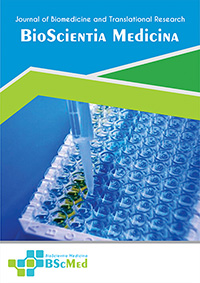Main Article Content
Abstract
A B S T R A C T
Introduction. Preeclampsia is one of the leading causes of maternal and perinatal
morbidity and mortality and is still a disease of theory. Klotho is a new gene, in
several biological processes in the pathophysiology of preeclampsia that play a role
in regulating endothelial nitric oxide production, angiogenesis, production of
antioxidant enzymes and protection against endothelial dysfunction. The Klotho G-
395A genotype AA promoter polymorphism is the cause of hypertension. This study
aims to determine the relationship of the Klotho G-395A promoter polymorphism to
the incidence of preeclampsia. Methods. This study is an analytical study with a
case-control design. The research was conducted at Pembina community health
centre of Palembang and the public hospital of Prabumulih in February - July 2020
and involving 50 case group and 50 control group. To determine the genotype and
allotype of the Klotho G-395A gene promoter polymorphism, using polymerase chain
reaction examination. Result. The results showed that the risk factors for maternal
age and maternal gestational age had a significant relationship with the incidence of
preeclampsia (p-value 0.015; p-value 0.000). There was a significant relationship
between the Klotho G-395A genotype GA + AA promoter polymorphism and the
incidence of preeclampsia (p-value 0.024; OR = 2.571; 95% CI = 1.122-5.895), while
allotypes in the study sample also had a significant relationship with the incidence
of preeclampsia. preeclampsia (p-value 0.025; OR = 1.978; 95% CI = 1.087-3.599).
Conclusion: There is a significant relationship between the Klotho G-395A gene
promoter polymorphism and the incidence of preeclampsia.
Keywords
Article Details
As our aim is to disseminate original research article, hence the publishing right is a necessary one. The publishing right is needed in order to reach the agreement between the author and publisher. As the journal is fully open access, the authors will sign an exclusive license agreement.
The authors have the right to:
- Share their article in the same ways permitted to third parties under the relevant user license.
- Retain copyright, patent, trademark and other intellectual property rights including research data.
- Proper attribution and credit for the published work.
For the open access article, the publisher is granted to the following right.
- The non-exclusive right to publish the article and grant right to others.
- For the published article, the publisher applied for the Creative Commons Attribution-NonCommercial-ShareAlike 4.0 International License.





